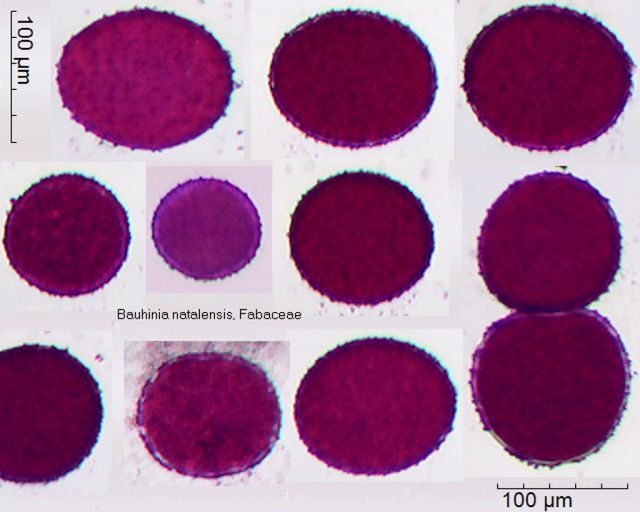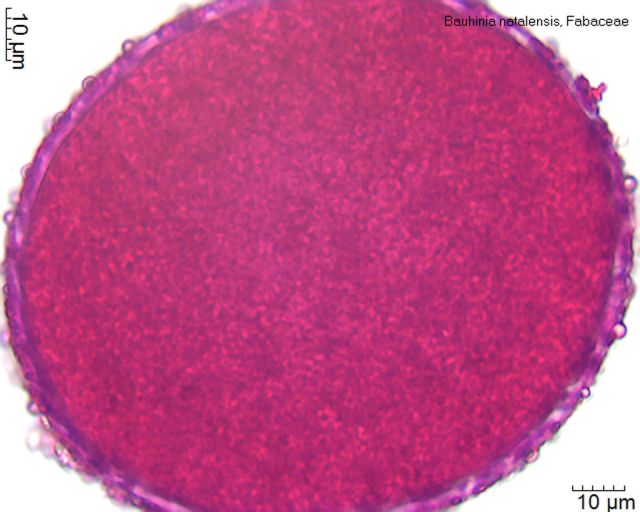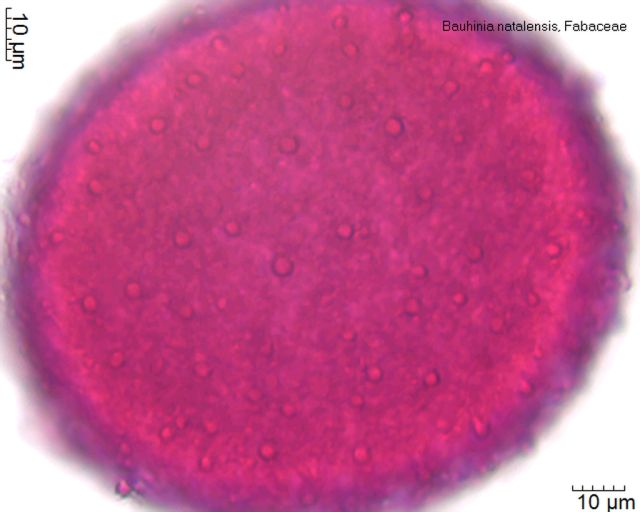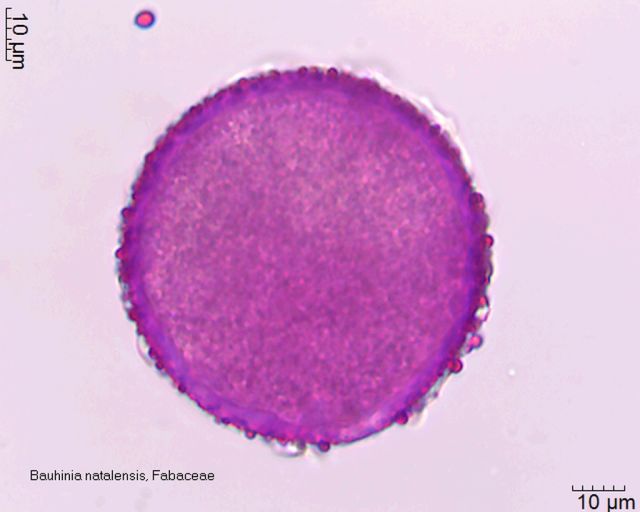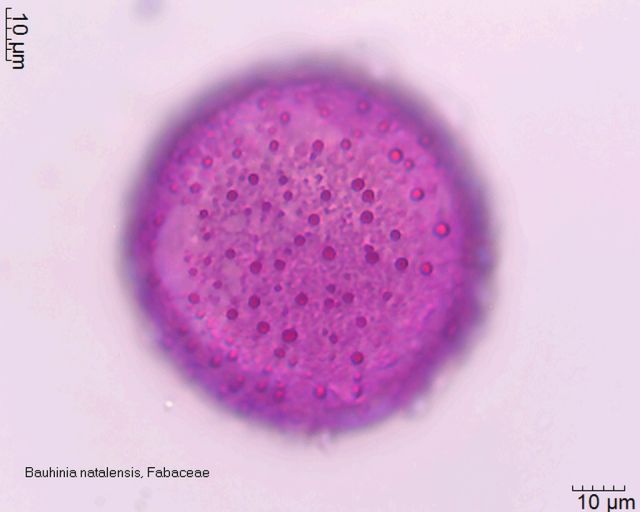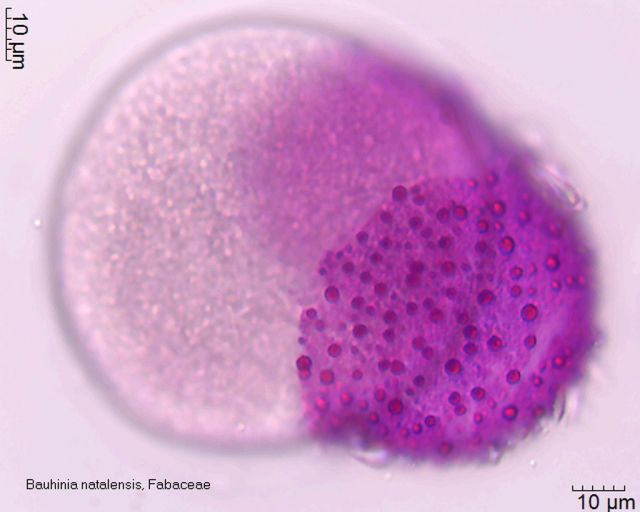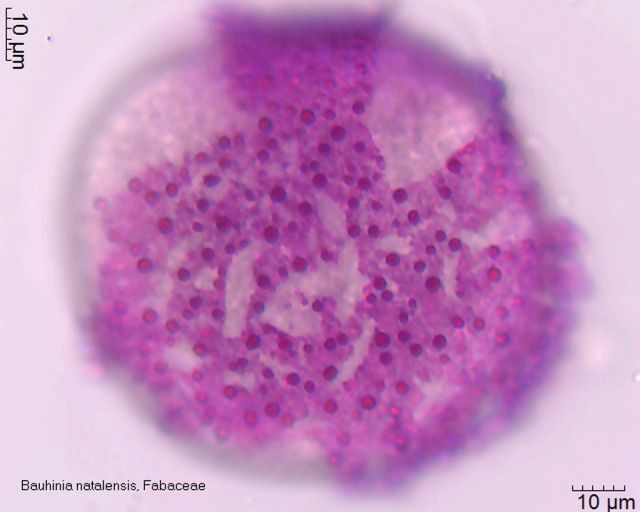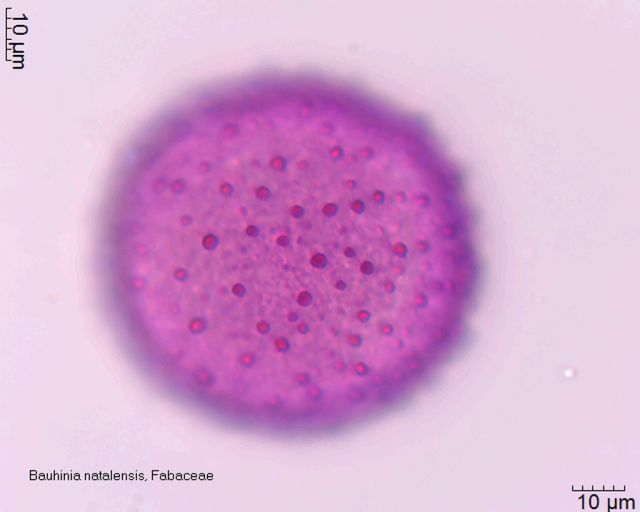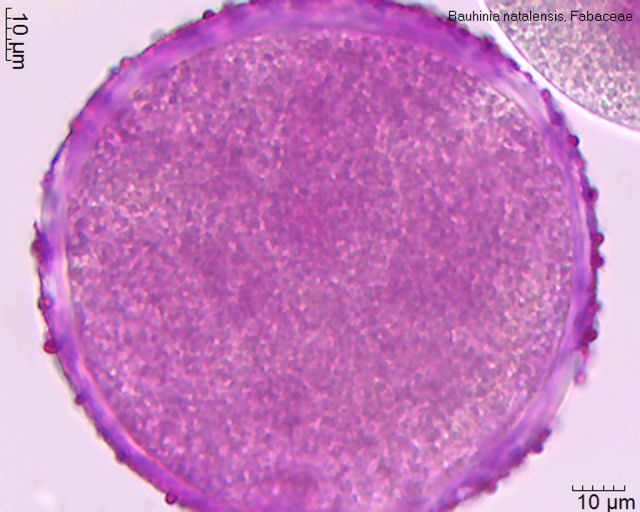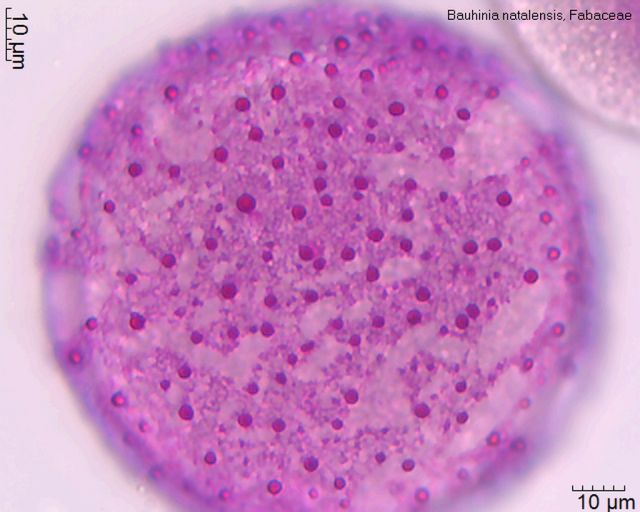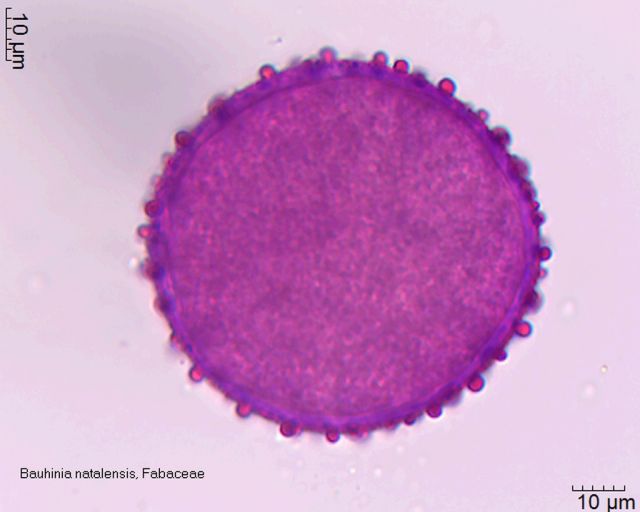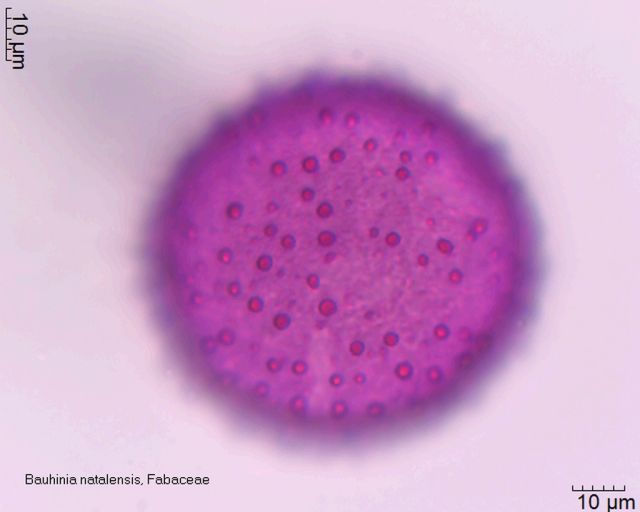Bauhinia natalensis: Unterschied zwischen den Versionen
Zur Navigation springen
Zur Suche springen
KKeine Bearbeitungszusammenfassung |
KKeine Bearbeitungszusammenfassung |
||
| Zeile 8: | Zeile 8: | ||
| pkd ={{PK07}} | | pkd ={{PK07}} | ||
| pk =Inaperturat | | pk =Inaperturat | ||
| bm =Elliptisch bis rund, sphäroid bis optisch leicht oblat (PoFormI ca. 0.86; 0.81-0.97, abgeschätzt, da sterische Situation unklar), inaperturat, gemmat bis clavulat auf reticulat bis rugulat. Viele PK platzen in der Glyceringelatine oder im Rotimount Aqua innert Minuten. Nur in der Fuchsin-Wassermischung bleiben die Pollen intakt. In dieser Mischung wurde die Grösse der Pollen bestimmt. Der Durchschnitt aller Messungen liegt bei 110 µm. Die Anzahl Gemmae pro 50 μm<sup>2</sup> liegt bei etwa 1. Die Pollenklasse ist schwierig zuzuteilen. Teilweise sind Ansätze von Colpi erkennbar. Es könnte sich aber auch nur um Risse in der Exine handeln. Interessante Literatur bei <ref>Banks H. et al., Evolution and diversity of pollen morphology in tribe Cercidae (Leguminosae), Taxon, 2014, 63 (2), 299-314</ref><ref>Moreira F. et al., The systematic value of pollen morphology in trees ans shrubs species auf Bauhinia L. occuring in Brazil, Acta Botanica Brasilica, 2013, 27 (2), 400-4107</ref><ref>Ribeiro dos Santos F. et al., Pollen of Bauhinia L. and Phanera Lour. from the Brazilian Caatinga, Am J | | bm =Elliptisch bis rund, sphäroid bis optisch leicht oblat (PoFormI ca. 0.86; 0.81-0.97, abgeschätzt, da sterische Situation unklar), inaperturat, gemmat bis clavulat auf reticulat bis rugulat. Viele PK platzen in der Glyceringelatine oder im Rotimount Aqua innert Minuten. Nur in der Fuchsin-Wassermischung bleiben die Pollen intakt. In dieser Mischung wurde die Grösse der Pollen bestimmt. Der Durchschnitt aller Messungen liegt bei 110 µm. Die Anzahl Gemmae pro 50 μm<sup>2</sup> liegt bei etwa 1. Die Pollenklasse ist schwierig zuzuteilen. Teilweise sind Ansätze von Colpi erkennbar. Es könnte sich aber auch nur um Risse in der Exine handeln. Interessante Literatur bei <ref>Banks H. et al., Evolution and diversity of pollen morphology in tribe Cercidae (Leguminosae), Taxon, 2014, 63 (2), 299-314</ref><ref>Moreira F. et al., The systematic value of pollen morphology in trees ans shrubs species auf Bauhinia L. occuring in Brazil, Acta Botanica Brasilica, 2013, 27 (2), 400-4107</ref><ref>Ribeiro dos Santos F. et al., Pollen of Bauhinia L. and Phanera Lour. from the Brazilian Caatinga, Am J Plant Sci, 2012, 3, 909-920</ref>. | ||
| nr =25-006, 25-006-1 | | nr =25-006, 25-006-1 | ||
}} | }} | ||
Version vom 14. August 2022, 12:21 Uhr
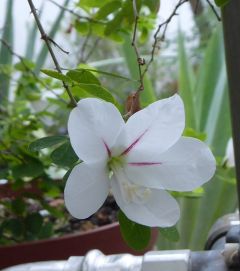
|
Familie: | Fabaceae (Schmetterlingsblütler) |
| Deutscher Name: | Natal-Bauhinie | |
| Pollengrösse: | 128 (97.5-139.8), 110 (94.1-121.0) μm (VeryLarge) | |
| Pollenklasse: | 07 Inaperturatae inkl. Polyplicatae | |
| Pollen: | Elliptisch bis rund, sphäroid bis optisch leicht oblat (PoFormI ca. 0.86; 0.81-0.97, abgeschätzt, da sterische Situation unklar), inaperturat, gemmat bis clavulat auf reticulat bis rugulat. Viele PK platzen in der Glyceringelatine oder im Rotimount Aqua innert Minuten. Nur in der Fuchsin-Wassermischung bleiben die Pollen intakt. In dieser Mischung wurde die Grösse der Pollen bestimmt. Der Durchschnitt aller Messungen liegt bei 110 µm. Die Anzahl Gemmae pro 50 μm2 liegt bei etwa 1. Die Pollenklasse ist schwierig zuzuteilen. Teilweise sind Ansätze von Colpi erkennbar. Es könnte sich aber auch nur um Risse in der Exine handeln. Interessante Literatur bei [1][2][3]. | |
| Präparatenummer: | 25-006, 25-006-1 | |
| Diskussion: | Kommentare und Hinweise zu Bauhinia natalensis ans Pollen-Wiki senden |
- ↑ Banks H. et al., Evolution and diversity of pollen morphology in tribe Cercidae (Leguminosae), Taxon, 2014, 63 (2), 299-314
- ↑ Moreira F. et al., The systematic value of pollen morphology in trees ans shrubs species auf Bauhinia L. occuring in Brazil, Acta Botanica Brasilica, 2013, 27 (2), 400-4107
- ↑ Ribeiro dos Santos F. et al., Pollen of Bauhinia L. and Phanera Lour. from the Brazilian Caatinga, Am J Plant Sci, 2012, 3, 909-920
Stebler Th., Bauhinia natalensis, In: Pollen-Wiki (14. Mai 2024), https://pollen.tstebler.ch/MediaWiki/index.php?title=Bauhinia_natalensis .
